How to Get Rid of Hornets Forever and Enjoy a Pest-free Life

One of the many things that make summer so enjoyable is getting together with friends and family for a barbecue. But when you have unwanted guests in the form of stinging hornets, the fun can disappear quickly. If you or someone you know is allergic to insect stings, hornets are extremely dangerous dinner companions.
Luckily, the following guide will teach you how to get rid of hornets and hornet nests, with special attention given to keeping your children and pets safe from any treatment method. You’ll also learn how to keep hornets away from your home and yard—for good.
It is important to note that hornets are aggressive when they feel threatened and they can sting you multiple times. Their venom is more powerful than bees, wasps, or yellow jackets. Avoiding children and pet exposure to active hornet areas is crucial. The best way to avoid getting stung by a hornet is to protect yourself, kill them, and remove the nest.
Photo via Shutterstock
What Do Hornets Look Like?
Although hornets are a subspecies of wasps and have many of the same characteristics as wasps (they both belong to the Vespidae family), there are ways to tell them apart. Knowing what you’re dealing with is important when deciding how to get rid of hornets.
The biggest difference between a hornet and a wasp is size, as hornets are much bigger than wasps and are nearly twice as long as yellow jackets. Another way to identify a hornet versus a wasp is by their wider heads, larger and more rounded abdomens, and thin waist between the thorax and abdomen.
Wasps are typically 1/4 inch to under an inch long. Because there are thousands of species of wasps, their colors vary. Some are red, others black and some even have a bluish tinge to them. The most common wasp is the paper wasp, which has a smooth black and yellow striped body. Wasps have long bodies, almost like giant-sized ants. The red wasp is common in the southern United States, and is a larger type of paper wasp—it is orangish-red and extremely vicious.
Yellow jackets are small (about three-quarters of an inch long), brightly yellow-and-black striped, and slim with narrow waists and narrow wings.
One way to tell the difference between a paper wasp and a yellow jacket is, if you get close enough to one, look for the spots immediately behind the head of a paper wasp, which do not appear on yellow jackets.
Types of Hornets to Watch Out For
There are two main types of hornets in the U.S. The only true hornet is the European hornet, which is 1 to 1.5 inches long with primarily yellow and black coloring, and a brownish body. They have yellow rings around their abdomens and a yellow face. The black bands in between the yellow rings form a V shape.
The bald-faced hornet is actually a larger wasp and is about 3/4 of an inch in length. They have a black body with primarily white markings on their head. They also have white bands, or rings, around the lower parts of their abdomen.
What Attracts Hornets to Your Home
One way to get rid of hornets is to remove what attracts them to your home. Hornets love sweet smells, pockets of warmth, and things they can snack on. Here are a few specifics around your home that might attract hornets:
1. Open food and drinks.
Your uncovered garbage cans can draw hornets from far and wide. Soft drink cans with even a small amount of sugary goodness attract hornets who think your home is a dessert buffet. Any unbagged food scraps are like a beacon to them.
2. Flowers
Besides the sweet smell, flowers provide food for hornets by way of aphids and other garden-loving insects that just so happen to be a hornet’s favorite food.
3. Fruit trees
These plants are a feast for hornets, especially when fallen fruit is left on the ground. The sugary goodness combined with the smell of fruit baking in the sun is a powerful attraction for hornets.
4. Warm crevices
When winter comes, hornets find crevices in your siding, eaves, tree stumps, and decks to make their homes. Hornets love areas of your home that will protect them and their nests from harsh weather. If any of these areas are close to accessible garbage or flowers, they attract hornets even more.
Photo via Shutterstock
How to Get Rid of Hornets
Before you can get rid of hornets, you’ll need to find their nest. A hornet nest is drop-shaped with a clear round hole at the bottom that allows the hornets to fly in and out of the nest.
While wasps' nests have multiple openings, a hornet nest will have just one. Look for nests under the eaves of your house, in the middle of a tree (protected by limbs and leaves), or in a rotting tree stump. Once you find the nest, prepare to treat it.
DIY Hornet Nest Spray
For a safer alternative to a commercial insecticide, mix up a homemade hornet-killing spray. You’ll need ¼ cup of good quality grease-cutting dish soap and a nozzle sprayer that screws onto the end of your hose.
Pour the dish soap into the sprayer and turn the water on full blast when you’re a safe distance from the hornet nest, but close enough for the spray to hit it. Once it gets sudsy, aim the sprayer at the nest and soak it. The beauty of this method is that it’s not only safe around children and pets, but it’s safe for the environment.
If this DIY method doesn’t work or you don’t have a nozzle sprayer on hand, you can turn to a special insecticide (like this one from Ortho) that kills wasps and hornets. Be sure to follow the instructions for use carefully.
Insecticides are harmful chemicals meant to kill, so keep your children and pets as far away as possible. Be sure to wash your clothing and skin thoroughly before coming into contact with children and pets after treating a hornet nest with insecticide.
How to Spray a Hornet Nest
Whether you opt for the DIY method or a store-bought spray insecticide, be sure to spray at night to safely get rid of hornets, since they are less active and tend to spend their time in nests at night.
Use a flashlight covered with red film to see where you’re spraying without attracting hornets to the light. Also, make sure there isn’t any wind that will direct the spray away from the nest.
Wear long sleeves and pants, along with goggles to protect your eyes—if a stray hornet comes your way, you want as little of yourself exposed to avoid being stung.
Spray the nest thoroughly to saturate it and leave the area as soon as you’re finished spraying. Wait a minimum of 24 hours before checking the nest. If you see hornet activity, re-treat the nest the following night.
For large hornet nests, you may have to spray multiple times over the course of a few days. Once you are absolutely sure the nest is vacant, you will need to remove it (keep reading for help on that).
Photo via Adrienne Carrie Hubbard | Crafty Little Gnome
DIY Hornet Trap
Another way to get rid of hornets naturally is to create a hornet trap. You can also buy traps, but making your own using a two-liter plastic soda bottle is super easy and cost-effective.
Tools and Materials Needed:
- Sharp knife
- Empty two-liter bottle
- 1 cup vinegar
- Dish soap
- Tape or stapler
- Long, thin piece of meat
- Twine
- Decorative sticky paper (optional)
- Heavy plastic bag
1. Prepare Bottle
With a sharp knife, carefully cut the neck off of the bottle where the curve of the bottle starts to straighten. Place one cup of vinegar and a few drops of dish soap in the bottom part of the bottle.
Invert the cut-off part of the bottle so it looks like a funnel and place it over the opening of the bottom part of the bottle. Tape or staple the bottle parts together and using the knife, punch one hole in each side.
2. Add Bait
Insert a long, thin piece of meat (which hornets love) on a length of twine through the funnel opening. The meat will be at the center of the length of the twine. Make sure the twine is long enough to hang about halfway down into the bottle but also form a loop to hang from something.
3. Feed Twine Through
Run the twine through the side holes and knot the twine together at the ends to create a loop to hang the trap. If you want your trap to be disguised, cover it with decorative sticky paper.
4. Hang Trap
Hang the bottle in an area outside where you sense hornet activity, preferably somewhere out of the reach of children and pets since hornets will be active before they get trapped. Hornets will be attracted to the smell of the meat inside the bottle and will be lured toward it into the vinegar and won’t be able to climb back out.
5. Empty Trap
When the trap is full, remove it from its post and cover it completely with a heavy plastic bag, closing it securely. Place it in a tightly covered trash can and empty the trash can as soon as you can.
How to Get Rid of Ground Hornets
Ground hornets are actually wasps. They’re one of the largest wasps at two inches in length, which also makes them one of the scariest looking. They’re also known as cicada killers because they paralyze cicadas and use them to feed their young. If you’ve lived in the south, especially during a 17-year cicada appearance, you may think having ground hornets around is the lesser of the two evils.
Unfortunately, ground hornets destroy your lawn in the process of making their nests. While they have individual nests, they tend to create their nests around other ground hornets’ nests. And while they aren’t particularly aggressive, the females will sting if they feel threatened.
If you’d like to use an all-natural method that you can make yourself and you’re only dealing with a few nests, try using hot soapy water:
Fill a bucket with hot water, adding about a quarter cup of dish soap as the bucket is filling. Wait until the evening when the hornets are in their nests. Pour the mixture into the entrance hole leading to the ground hornet nest. Cover the hole up with soil as quickly as you can.
The plastic bottle trap method above also works for ground hornets. They are attracted to meat and will drown in the vinegar solution after becoming trapped in the bottle.
Lastly, you can treat them with the same commercial insecticide that you would use on a hanging nest. Check with your local home improvement or hardware store to find the best one for your situation.
How to Get Rid of a Hornet Nest
Before you think about getting rid of a hornet nest, be absolutely sure there are no hornets in it. Follow the instructions for getting rid of hornets above, even if you believe the nest is no longer occupied.
You’ll know the nest is still active if the insects are still flying in and out of the nest’s entrance hole. And once it’s empty, it’s empty; hornets never take residence in old nests.
Once the hornet nest is 100 percent vacated, remove it with a long pole or tree branch by knocking at it from the top. Place the nest in a heavy trash bag and securely tie it shut. Dispose of the nest in a tightly sealed trash can, preferably right before it’s scheduled to be emptied.
How to Keep Hornets Away
Now that you know how to get rid of hornets, there are several tips you can follow to keep these nasty pests away from your home:
- Because garbage attracts hornets, bag your trash and wait until you’re ready to have your trash can emptied to put food waste into it (even bagged). To keep hornets away, keep your trash can clean and covered, especially in the summer when the heat intensifies the smell.
- Flower gardens and the tasty bugs they attract are also attractive to hornets. They love feasting on aphids and other garden bugs, so keep your landscaping trimmed and grow bug-repelling plants to cut down on the number of bugs available. Always plant flowers away from areas where you’ll be congregating.
- If you have fruit trees, clean up any fallen fruit and dispose of it in heavy sealed bags. Place in a covered trash can and empty as soon as possible in order to keep hornets away from the trees.
- Besides food sources, seal up crevices and check the eaves of your house often to head off problems. Get rid of rotting tree stumps or other untreated woody areas that hornets like to call home.
Hornets can be beneficial, just not when they’re too close to your living spaces. Get rid of hornets safely and effectively with the tips above so you can enjoy your time outdoors.
Has your home been plagued by hornets? Do you have tips for eradicating them? Share them below—we’d love to hear them!
Enjoyed the project?
Comments
Join the conversation
-
 Queeneilee
on Jan 24, 2023
Queeneilee
on Jan 24, 2023
We had to evacuate our summer house due to a massive nest(s) in the walls. It took professionals three treatments to get rid of them. I will follow your these tips without a doubt
-



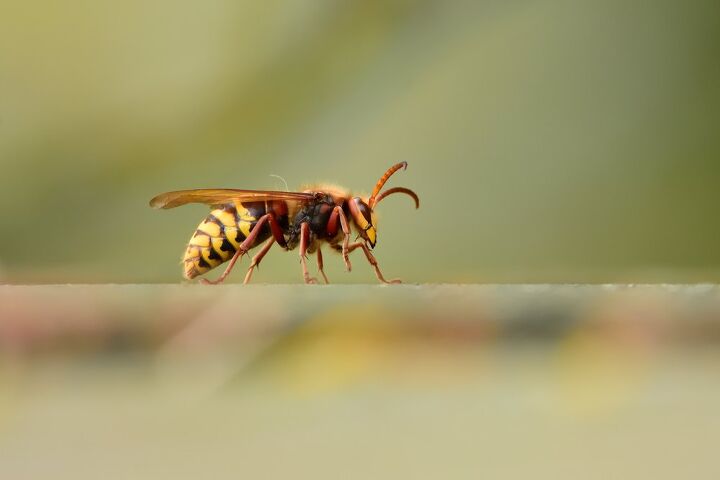



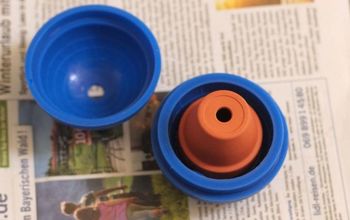
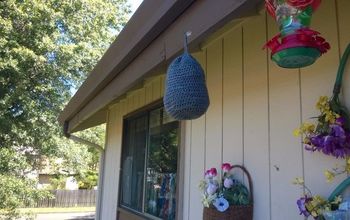
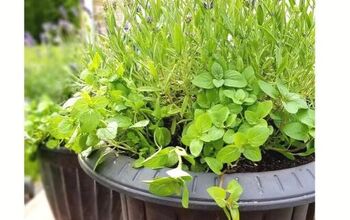

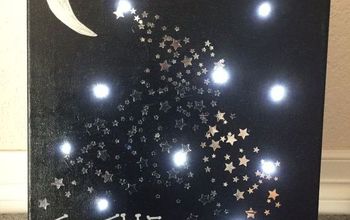

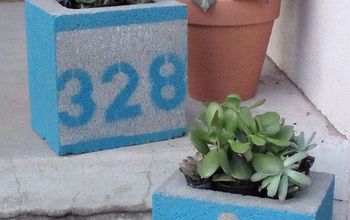

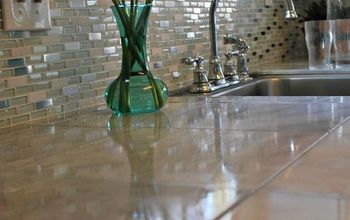







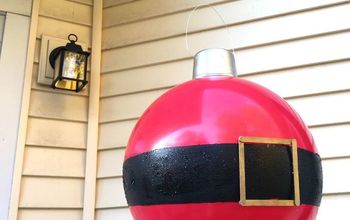


Frequently asked questions
Have a question about this project?